 July 1, 2024 | Digital Piano Polyphony – What is it? | Report | The topic of “polyphony” in a digital piano and what it means is actually an interesting, but yet sometimes confusing subject to many people. Nevertheless, this specific specification is important to understand, especially if you’re looking to purchase a digital piano. Since digital piano companies make an effort to publish the maximum number of “polyphonic notes” their different models can produce, then I believe it is to understand why they talk about polyphony and what it can mean to your piano playing experience.
July 1, 2024 | Digital Piano Polyphony – What is it? | Report | The topic of “polyphony” in a digital piano and what it means is actually an interesting, but yet sometimes confusing subject to many people. Nevertheless, this specific specification is important to understand, especially if you’re looking to purchase a digital piano. Since digital piano companies make an effort to publish the maximum number of “polyphonic notes” their different models can produce, then I believe it is to understand why they talk about polyphony and what it can mean to your piano playing experience.
Also the digital piano never went out of tune and I never liked playing instruments that were out of tune. I learned about piano polyphony memory in digital pianos & keyboards a long time ago because it became important as I progressed in my playing skills and now I am an expert at it. Polyphony which is phonetically pronounced “pol-if-a-knee” is the ability of the instrument sounds and notes you are (at any moment) playing and sustaining on the piano to be heard all at the same time without interruption or note “dropout” including any drum patterns, chord arrangements (assuming the digital piano has those features), and sustain pedal being used.
 |
| Casio AP-470 |
In other words, if I am playing 2 or 3 sounds layered (mixed) together in the right hand along with 4 instrument sounds & drum patterns (which includes auto chord arrangements) in the left hand on a digital piano, and I am playing about 6 or 7 notes minimum at a time on the keyboard using both hands along with the sustain pedal being depressed by my foot at the proper times along with recording it on separate tracks, I would need enough polyphony (digital note memory) to keep it all going and therefore would need a lot of polyphony memory in the piano to do that.
However, most people do not play that way with all those things at one time so “polyphony power” needs are relative to how well you play, the type of music you’ll be playing, the way the acoustic piano sound was sampled on that piano, and how many sounds and features you would use at one time. So the whole “polyphony thing” can be much more complicated than one might think because the need for a lot of polyphony is relative to how well you play and what your musical needs and goals are.
| Yamaha – 256 note polyphony |
So the general formula is: the complexity of the (stereo) piano sound sample in the piano, the amount of stereo instrument sounds & effects (reverb, chorus, etc) plus the amount of notes (keys) you’re playing at one time, plus the amount of pedal sustain time, and the amount of recorded parts (tracks) that you’ll be recording and playing back (assuming you’ll be recording things) equals the need to have enough digital processing power (polyphony) to keep that all going properly. If the piano/instrument sounds are all in stereo as opposed to mono (some pianos have stereo instruments and some do not), the digital piano may need to have even more polyphony to accommodate a stereo piano sound.
In the “beginning” technology could only do 1, 2, 3, 4, 5, & 6 notes of polyphony sound processing power. Then there was 8, then there was 12, 16, 24, 32, 48, 64, 96, 128, 256, and so on. As technology progresses, it’s typical that manufacturers give you way more polyphony than you may ever need and this type of thing (having way more technology than you’ll ever use) is true of many electronic devices, computers, appliances, TV’s, etc, where people generally don’t use 50% of what that device is capable of doing with regard to its technology power.
 |
| 32 note polyphony |
Long ago when there was only 8 notes of polyphony in mono sound (I owned a few of those digital pianos & keyboards in the past) and you had two instrument sounds layered together at one time (in a layer like piano & strings) and were playing about 6-8 keys at one time in both hands (no drums or extra stuff on), you could only hear a maximum of 4 notes played on the keyboard at any one time because usually each sound took up one note of polyphony when you played the keys! In other words, you couldn’t hear everything you were playing because the piano ran out of memory! Notes would drop out constantly and it made the music sound very choppy and bad. If you tried to record that on a digital recorder in the piano it would only play back a few notes and sounds at a time and the song would continually be interrupted by the loss of polyphony or memory. It was a very sad time for me and others in the digital piano & keyboard world:( But it was all we had and it was certainly better than nothing.
| Kawai – 192 note polyphony |
Then over the years, little by little, digital keyboard manufacturers developed better technology and with that, more polyphony memory. Pretty soon I was able to play more songs with more sounds and better instrument sound realism without too much note dropout or sound interruption, but there were still significant limitations. But then came more sophisticated tones like stereo acoustic piano sounds with natural acoustic quality harmonics, overtones and string samples and more complex left hand accompaniments which all sucked up digital memory like a sponge.
I remember playing not only professional music jobs, but also in church and schools for many years (I still do today) when people had little knowledge of polyphony and its importance. I was using a very cool Roland digital piano (at the time) with 32 notes of polyphony (wow!) and a sophisticated Kurzweil sound model with just 24 notes of polyphony as well as another sound module with 16-notes of polyphony all connected together with MIDI cables.
That combination of digital music devices gave me a huge 72 notes of total polyphony, combining everything and at the time, that was pretty much unheard of and I thought it was very “cool.” I had two sounds coming from the Roland, one sound coming from the Kurzweil, and one sound coming from the other sound module all layered together for a really full sound with minimal note dropout most of the time (depending on how I played). People couldn’t believe how good it all sounded. But that was many years ago and you had to know how to put all that together properly and make it sound good, and most people/musicians could not do that.
 |
| Roland – 256 note polyphony |
Now manufacturers have started to figure out how to put more polyphony memory and other ingredients (including more cool sounds) and much more realistic piano sounds at a lower cost (cost is always an issue) into one keyboard or digital piano so you don’t need to have (own) more than one instrument to do all the things you want to do with your music. So generally speaking, more polyphony “frees up” your music so you can use all the functions on the digital piano to their maximum. However, I will say that many cases, 64-notes of polyphony will be adequate for a lot of people people depending on how well they play, especially if they are playing just piano music at a beginner or intermediate level. But if you are more advanced or will be laying two stereo instrument sounds together, then at least 120 notes of polyphony would be necessary.
 |
| Korg G1 Air digital piano |
If you want to progress as a player and eventually learn how to use more of the functions in your digital piano, especially if you are recording and then playing back your music up to 16-tracks using many notes, then be sure to get as much “polyphony” as you can for your budget. It’s like buying a computer these days…you may not use all the memory and speed it has right away, but you may want to know it’s in there in case you do:). I will say that having 120-note polyphony is more than enough note processing power for most people unless you are at a more advanced playing skill level. Some 120-note polyphony chips are actually expanded beyond their number because of multiple sample layers in the sound. Although 120 notes may be the specification, that 120-note polyphony chip can act just like a 256-note polyphony chip in terms of notes that can simultaneously be played and sustained.
If you are doing multi-track recording with simultaneous playback of many stereo sounds and notes, then a larger amount of polyphony may be necessary to do that. Layering 2 to 3 sounds together and playing them live in a complex music score will not use up the polyphony unless the instrument cannot electronically allocate the polyphony correctly. A couple of Roland and Korg digital pianos are examples of 120 & 128-note polyphony respectively that can play without any loss of notes even with complex music be played by a professional pianist. It just depends how good the overall technology is inside the piano since there are other technologies involved in creating the actual piano sound in digital pianos these days. The polyphony number (128, 256, etc) is not always a good indicator of what you’ll actually be getting and the piano price is also not an indicator of the amount of polyphony you may get in that instrument.
 Some of the newer top name brand digital pianos out there now have 256-note polyphony piano power and a few brands now have “unlimited polyphony” in their piano sound technology. So how can some of these pianos now have “unlimited polyphony” where there is no limit at all in using polyphony. Wouldn’t it be better to have 256-note polyphony or even unlimited polyphony in a digital piano? The answer to that question is “not necessarily” because the polyphony number, regardless of what it is, is not the only criteria to having a realistic piano sound in a digital piano that plays and works well.
Some of the newer top name brand digital pianos out there now have 256-note polyphony piano power and a few brands now have “unlimited polyphony” in their piano sound technology. So how can some of these pianos now have “unlimited polyphony” where there is no limit at all in using polyphony. Wouldn’t it be better to have 256-note polyphony or even unlimited polyphony in a digital piano? The answer to that question is “not necessarily” because the polyphony number, regardless of what it is, is not the only criteria to having a realistic piano sound in a digital piano that plays and works well.

 However, high note polyphony or unlimited polyphony power is useless unless the piano sound itself is natural, organic and correctly emulates a good acoustic grand piano as closely as possible. The “quality” of the piano sound and its ability to sound natural and organic has to do with how advanced the piano sound creation technology is for these different digital piano companies I would personally have less polyphony and a better piano sound as opposed to the other way around.
However, high note polyphony or unlimited polyphony power is useless unless the piano sound itself is natural, organic and correctly emulates a good acoustic grand piano as closely as possible. The “quality” of the piano sound and its ability to sound natural and organic has to do with how advanced the piano sound creation technology is for these different digital piano companies I would personally have less polyphony and a better piano sound as opposed to the other way around.Just be sure the digital piano you are thinking about getting has enough polyphony processing power to get the job done for your musical needs. If you are mainly just playing piano and not simultaneously using other sounds and digital features, then 120, 128, 192, and 256 notes (or more) is all you will need if you will be playing at an intermediate level or beyond. The more sounds you use together and the the advanced the music is that you are playing, the more stereo polyphony you will need and the more advanced the piano sound chip/engine needs to be. Please contact me before you purchase a digital piano from anyone anywhere and I can help you make the right decision in purchasing a new digital piano.
If you want to know more about digital pianos or want to find out how to get one for LESS MONEY than internet, Amazon, & store sale prices, please contact me at tim@azpianowholesale.com or call direct at 602-571-1864
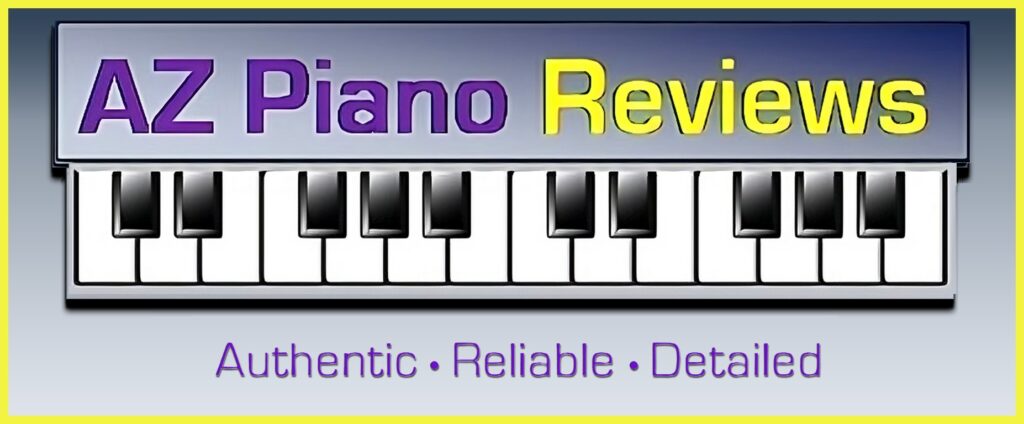






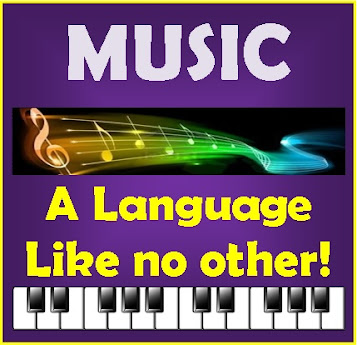

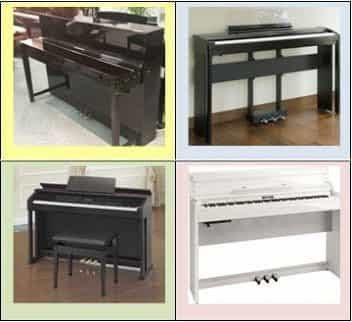
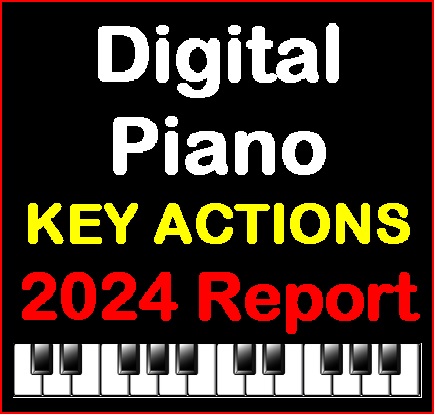
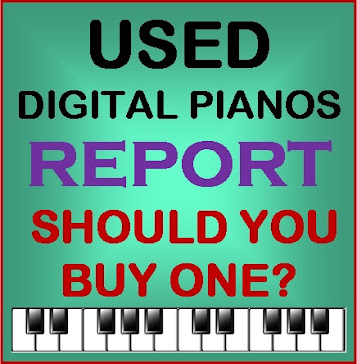
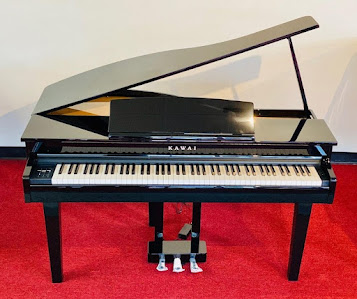
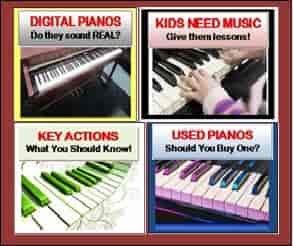
pretty interesting, best description i found on web, thanks.
good info! it is exactly what I was looking for. thanks!
About the YAMAHA P35… It has only 32 polyphony… So, would that be an issue? I plan on buying a digital piano and I was thinking about the YAMAHA P35, but I am very concerned about the 32 polyphony only… (I am more into classical piano music). For classical music, how would you classify it? Is it good enough?
32 note polyphony is not nearly enough for more complex classical music and the P35 has a limited pedal decay time which is also a deficiency for classical music. I would suggest something else if you can afford it. You may contact me by email for more help and details
I am looking at the Roland hp 505 which has 128 I believe. Is this good enough for an advanced player?
Hi there,
The answer to your question is not a simple one. Please contact me by email or phone if you're in the US, or just email if you are outside the US. If you are in the US please let me know where you live…your zip code would help as I like to know where people are contacting me from:. Thx
Hi Tim
I am looking at getting a digital piano for my son who is working towards his Grade 1 exams. We have an old Yamaha PSR 292 keyboard at home, which does not offer weighted keys for his practice. I found a used Roland F100 for around £300. However as it is a rather old model, it only has 64 note polyphony. Would you recommend this piano?
64 note polyphony would be OK but the F100 key action is not very realistic as compared to other digital pianos. However the F100 is certainly much better than PSR292 so it would be fine as long as the price is low. There is normally no warranty on used digital pianos so there is always a risk in buying used.
Thanks, would Kawai CN24 or Yamaha Ydp162 be a better investment? Which of the two?
Hi Tim,
I am looking at a persistent solution for a stage/recording piano, for years to come. I was looking at PX 350 (~ USD 670) that has 128 notes polyphony. So I was like wondering, will it be seriously wiser to pay an extra ~ USD 400 to get, say a PX 5S that has 256 notes polyphony (disregard all other factors).
What do you recommend?
P.S. PX 850 is not really an option for me as it doesn't have on board speakers.
I'm a beginner… beginner. I'm looking at an older Yamaha that is in good condition with 16 polyphony. Am I going to be disappointed with that, to start with?